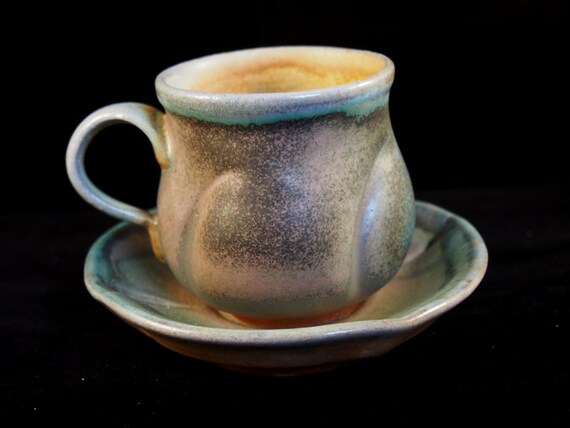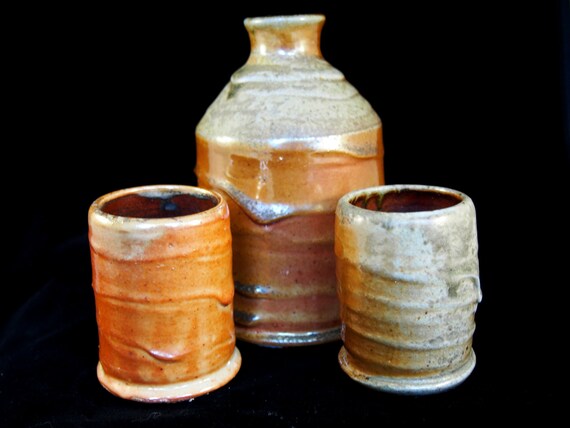The other day, I asked a young man in our community if he could try to translate a word I know from Japanese into English. He said he'd try. The word is "Noborigama," and I'm sure I butchered the pronunciation. I salute the guy. He asked for some context, and I told him it was a type of pottery kiln, which just confused him some more. After sounding it out a few times, he came up with "to climb the mountain," and was sure he was wrong.
But it made sense to me, and I told him right away why. This is a noborigama kiln, the one I helped fire last week:
This is a wood fired kiln with three chambers. The first chamber is almost in the center of this photo: the leftmost dome. The second chamber is to the right of it: a higher dome. The third chamber is between the second chamber and the chimney, which is the rightmost brick structure. It's hard to see it because the woman in the blue jacket is standing in front of it. The floor of the first chamber is the lowest, then the floor of the second chamber is a little higher, and the floor of the small third chamber is even higher.
To start the fire in the kiln, a campfire is built to the left of the first chamber on the ground. There are actually holes near the ground there. Then wood is put in through a port on the front of the first chamber next to the door (the doors are bricked closed during firing). That first chamber heats up over about 18 hours to cone 10, about 2400F. When the first chamber is hot enough, the people firing the kiln stop adding wood to the first chamber and start adding it to the higher second chamber through a similar port. When that chamber reaches cone 10, they stop adding wood and allow the fire to climb to the third chamber and burn itself out. The whole things takes about 24 hours.
The flow of air and fire in the kiln starts at ground level all the way to the left and moves through each chamber, higher and higher to the chimney on the right. It literally climbs a hill upward as the kiln fires.
When I told the young man how the kiln works and that the name physically describes what happens to the fire, he said that was very Japanese. And very cool.
But it made sense to me, and I told him right away why. This is a noborigama kiln, the one I helped fire last week:
This is a wood fired kiln with three chambers. The first chamber is almost in the center of this photo: the leftmost dome. The second chamber is to the right of it: a higher dome. The third chamber is between the second chamber and the chimney, which is the rightmost brick structure. It's hard to see it because the woman in the blue jacket is standing in front of it. The floor of the first chamber is the lowest, then the floor of the second chamber is a little higher, and the floor of the small third chamber is even higher.
To start the fire in the kiln, a campfire is built to the left of the first chamber on the ground. There are actually holes near the ground there. Then wood is put in through a port on the front of the first chamber next to the door (the doors are bricked closed during firing). That first chamber heats up over about 18 hours to cone 10, about 2400F. When the first chamber is hot enough, the people firing the kiln stop adding wood to the first chamber and start adding it to the higher second chamber through a similar port. When that chamber reaches cone 10, they stop adding wood and allow the fire to climb to the third chamber and burn itself out. The whole things takes about 24 hours.
The flow of air and fire in the kiln starts at ground level all the way to the left and moves through each chamber, higher and higher to the chimney on the right. It literally climbs a hill upward as the kiln fires.
When I told the young man how the kiln works and that the name physically describes what happens to the fire, he said that was very Japanese. And very cool.



